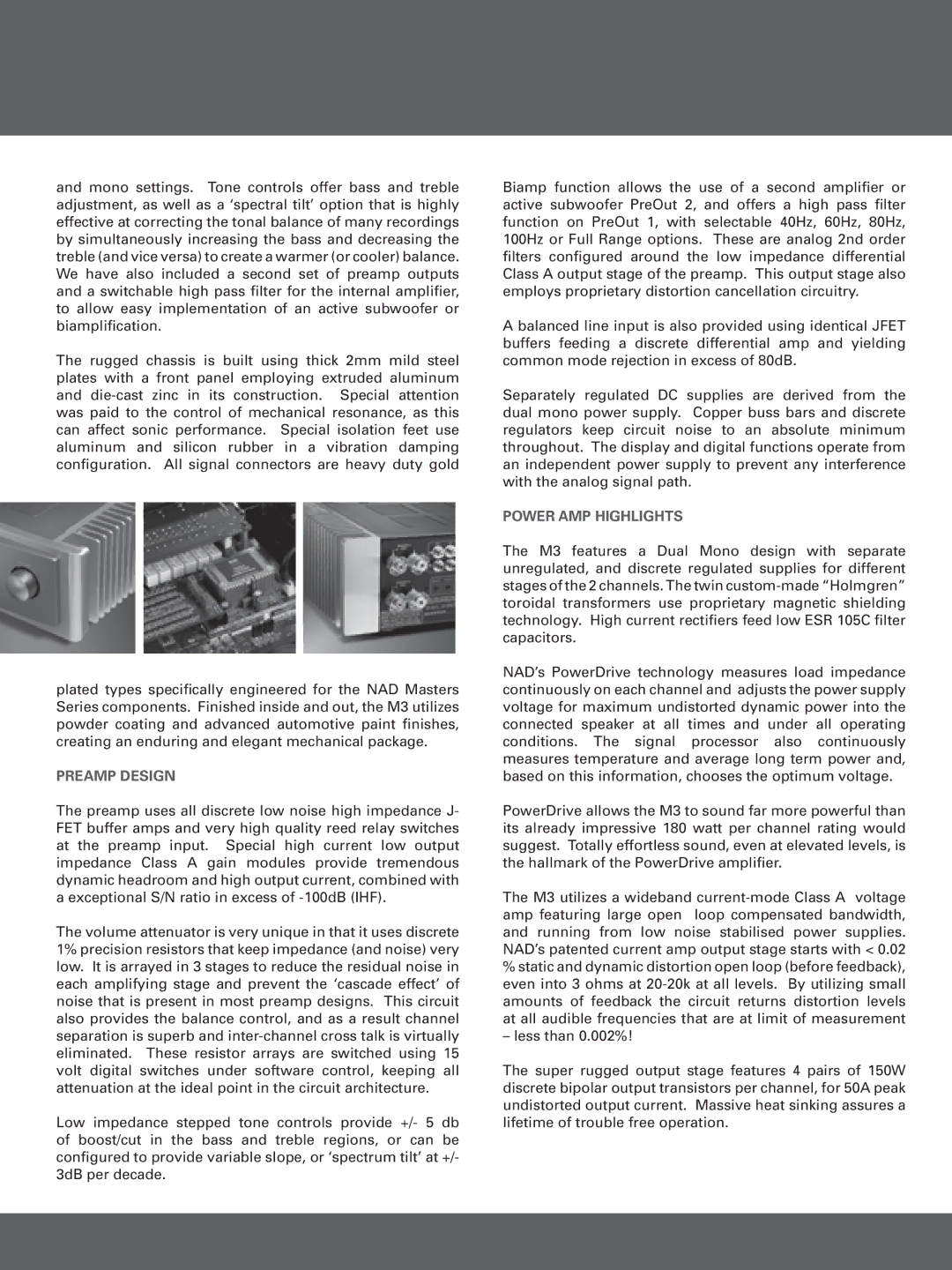M3 specifications
The NAD M3 is a high-performance integrated amplifier that combines state-of-the-art technology with exceptional sound quality, making it an ideal choice for audiophiles and music enthusiasts. Known for its versatility and power, the M3 is a key player in NAD's portfolio, pushing the boundaries of home audio systems.One of the standout features of the NAD M3 is its HybridDigital amplifier technology. This innovative approach harnesses the benefits of both analog and digital amplification, allowing for a highly efficient power output while maintaining a warm, natural sound. The M3 delivers an impressive 150 watts per channel into 8 ohms, providing ample power to drive a wide range of speakers with ease. The amplifier's dynamic performance ensures that music is reproduced with clarity, detail, and a robust tonal quality.
The M3 also incorporates NAD's proprietary DirectDigital technology, which eliminates the need for traditional analog-to-digital converters. This results in a purer signal path and reduced distortion, enabling listeners to experience their favorite music as it was intended to be heard. With a built-in digital-to-analog converter (DAC), the M3 supports high-resolution audio formats, including PCM up to 24-bit/192kHz, making it compatible with many modern digital audio sources.
Another notable characteristic of the NAD M3 is its extensive connectivity options. The amplifier features multiple analog and digital inputs, including optical and coaxial digital inputs, as well as USB connectivity, allowing users to connect various devices seamlessly. Furthermore, the M3 includes a built-in phono stage, accommodating both moving magnet and moving coil cartridges, which makes it an excellent choice for vinyl enthusiasts.
The design of the NAD M3 emphasizes both functionality and aesthetics. With a minimalist front panel and a large, intuitive display, users can easily navigate settings and tweak sound profiles to suit their preferences. The amplifier also supports NAD's proprietary Remote Control App, enabling users to control playback and settings from their smartphones or tablets, thus enhancing the overall listening experience.
In conclusion, the NAD M3 is a remarkable integrated amplifier that combines advanced technologies with user-friendly features. Its HybridDigital amplification, extensive connectivity, and support for high-resolution audio formats make it an outstanding choice for anyone seeking a powerful and versatile audio solution. Whether you are a seasoned audiophile or a casual listener, the M3 promises to elevate your musical experience.

